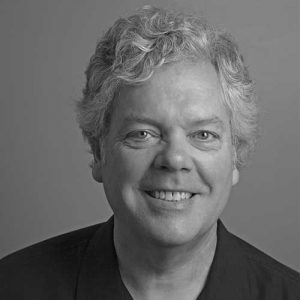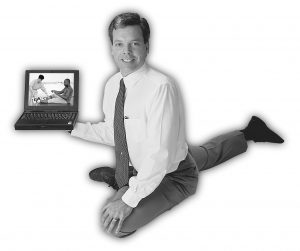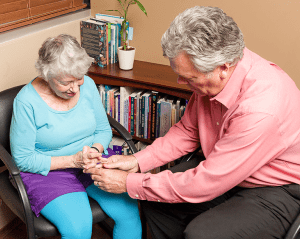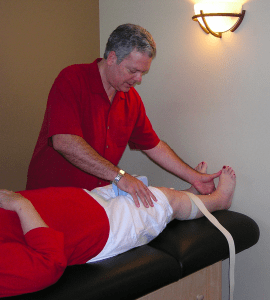Yoga Therapy’s Potential for Filling Comprehensive Integrative Pain Management (CIPM) Gaps in Underserved/Remote Locations
An interview with Matthew J. Taylor, PT, PhD, C-IAYT
 Dr. Taylor is an expert who has been involved in AACIPM’s efforts for many years. He brings a unique leadership and entrepreneurial background involving research, standards, physical therapy, yoga therapy, technology and community activism. This is a great read for anyone interested in what is the cutting edge in yoga therapy as it relates to comprehensive integrative pain management.
Dr. Taylor is an expert who has been involved in AACIPM’s efforts for many years. He brings a unique leadership and entrepreneurial background involving research, standards, physical therapy, yoga therapy, technology and community activism. This is a great read for anyone interested in what is the cutting edge in yoga therapy as it relates to comprehensive integrative pain management.
How does a clinically retired physical therapist end up working nearly full time on those gaps?
I retired from the clinic in 2016 and sold my yoga-based rehabilitation clinic. I wasn’t done asking questions about pain and suffering though. I’ve since been working on task forces, committees, and multiple projects that operate to scale change beyond direct pain care. That freedom allowed me to be a representative for the International Association of Yoga Therapists (IAYT) as I’m also a certified yoga therapist and past-president of the association. I have been inspired by the quality of people serving at these levels and the sincere spirit of collaboration towards person-centered care.
What gaps are you referring to in CIPM?
I’m referring to the many gaps in service that exist in our current system. I’ve been exploring the broader systemic and structural issues around pain management in my post-clinical career. On the one hand it is very discouraging, but also, within those gaps I believe lie real opportunities to serve. The two most recent Pain Policy Congresses (Nov ’18 & May ’20) starkly illuminated the gaps such as funding, shortage of providers, long standing racial biases, reimbursement challenges, rural locations, lack of integrative training for professionals, … well, you see my point…the list gets really long and heavy. As a provider it is disheartening, but I can’t imagine what it must be like for the people living with pain and their families.
What do you think limits filling these gaps? AACIPM’s interview with Dr. Kohli touched on many of the familiar, significant barriers within our systems. I wonder though, if we also aren’t overlooking or avoiding an even bigger issue? By that I mean, our individual and collective habit of protecting our “view” or turf, using the complexity of persistent pain as an excuse to not see and embrace the “simpler” resources available to us right now. I believe our biases are a major impediment to implementing CIPM.

Matthew Taylor, circa 1997, promoting the first “Integrating Yoga Therapy into Rehabilitation” seminars in the country.
Upon reflection, I see a pattern throughout my career involving the extension of services from highest level to lower levels with safety to meet needs. These experiences reveal that pattern:
- In 1980 my physical therapy training in the Baylor University-US Army included their physician extender model. As PT’s we were trained to increase access to orthopedic care while relieving the orthopedists’ burden of non-operative orthopedic evaluation and management. During my assignment at Ft. Leonard Wood, MO, I served in that role every morning in orthopedic sick call: taking histories, conducting exams, ordering X-rays and bone scans, running labs, and prescribing a few NSAIDs.
- In tandem with the PT’s role, there was the same extension of responsibility by physical therapy assistants (PTA) to address the limited resource challenges for PTs. PTAs often had to serve without direct supervision, in remote theaters of operation, etc., having much broader scopes of practice than their civilian counterparts.
- The pattern repeated in my medical gym in 1994, where we trained athletic trainers/personal trainers/undergraduate degreed exercise specialists to screen and supervise activity for medically complex/fragile members.
- Most recently, having initiated the development of certified yoga therapists (C-IAYT), we have discovered that our capacity to train yoga professionals to offer safe, therapeutic yoga does not begin to address the true need for this service. And this shortage is being further exacerbated as the pandemic limits training access while the demand for yoga therapy increases.
Based on this dilemma, I have joined the board of directors of Accessible Yoga to facilitate their goal of making yoga more accessible, especially to people who are underserved. There I hope once again be part of extending services safely and effectively.
How do you imagine yoga therapists and yoga teachers might be utilized for some of these gaps?

Simple yet powerful practices like mudras provide self-management tools.
This brings us to our April 2020 white paper on yoga therapy and CIPM and its over 100 citations. I led the four authors in setting out what yoga therapy is, how it does and can do more to support CIPM, and the gaps for all the involved stakeholders. Readers can read more fully on pp. 5-6, but this closing paragraph gives a nice summary:
“…as a practice that integrates the BPSS model of well-being, yoga therapy promotes autonomic nervous system regulation, strengthens interoceptive skills, fosters positive psychological states, increases physical health and resilience, and enhances prosocial behavioral attributes such as compassion, as described below. In service areas that lack conventional providers to address each facet of BPSS well-being, yoga therapy can augment the domains that aren’t accessible.”
For those who may not understand, can you explain the difference between yoga therapists and yoga teachers – in relevance to certification and inclusion in health plan coverage?
That’s a complex question, but let me try to be succinct. Readers wanting more depth can read here. Yoga therapy is a subset of yoga. In the United States, anyone can teach yoga, no matter their level of training as yoga is not regulated nationally or at the state level. IAYT leadership recognized the need for higher standards back in 2007 and have since created a separate scope of practice, standards for yoga therapy schools to become accredited, individual certification standards, and an enforceable ethics policy. Presently the minimum level of education to apply for certification as a yoga therapist is 1000 hours. This contrasts with the minimum level of 200 hours to register as a yoga teacher through the Yoga Alliance.
Yoga therapy training includes how to work interprofessionally, risk management principles and how to work in healthcare systems. The profession understands the need for further oversight and is developing its first national test for graduates.
So presently the profession is in an “in-between” state of development that has limited inclusion and participation dependent on organizational demands for credentialing. There have been instances where those challenges have been addressed, but quite frankly of course, the issue presently blocks many other efforts. Finding work arounds and creating satisfactory resolution of those concerns is a big part of where I and others are engaged at many levels. We welcome inquiries and appreciate the importance of continued development.

Beginning with attention to the physical experience leads to more subtle interoceptive perceptions.
Our move back to Iowa last summer has heightened my awareness for more examples. The plight here of farmers, coupled with both the scarcity services and the rugged individualist mindset of many is creating untold pain, to include a spike in suicides. One example out of many of how yoga professionals might support those farmers can be noted from the model of collaboration Daniel Libby, PhD has created with his Veterans Yoga Project. While serving on that board of directors, I witnessed their unique pattern of linking yoga professionals with mental health professionals to successfully extend instruction to veterans across many venues not previously served. Yoga instructors undergo focused training of skill sets required to work with trauma and pain, and then become part of a professional network that includes continuing education and shared client resources.
Now on the Accessible Yoga board, I’m witnessing very creative and unique ways yoga is being offered to people in jails, halfway houses, disability centers, body image friendly environments, LGBTQ welcoming classes, and so forth.
Are they all perfect? No. Is there a torrent of adverse effect reporting? No. Can process improvements be further developed? Absolutely. But the important point is there are individuals/local community health activists moving ahead to serve rather than waiting for some top-down guidance and instruction. I am confident with some additional evaluation and support, Accessible Yoga as an organization will offer support to more instructors and hosting organizations to create “bright spots” of innovation for bringing yoga to new venues and populations experiencing pain.
What other steps are you involved in to model such gap coverage and demonstrate outcomes?
The above examples of service all struggle with the barriers to funding and payment discussed during AACIPM’s May 2020 Symposium. Those complex factors beg the question, “How do we bridge between efficacious yoga behavioral skills and sustainable systems that teach those skills in safe environments?”
Through AACIPM and IHPC, I’ve been fortunate to meet David Elton, DC, Chief Strategy Officer for UHG Ventures Orthology. In our early discussions we realized their search for how to bring more CIPM into their rehabilitation clinics (Orthology) and our, the yoga therapy profession’s need for getting our foot “in the door” was a perfect fit. We’ve embarked on developing an incremental process of integrating yoga therapy into their services while preserving professional autonomy and opportunity for the therapists. While the pandemic has slowed progress, behind the scenes we are building clinical pathways, creating prototype EMR’s (gotta have the data), recruiting therapists, developing onboarding training processes, and working closely with the current staff for cultural integration. Will the first attempts be perfect? Of course not. But we’re all committed to learning, changing fast, and above all better serving people with pain in a safe environment.
My view is that if we can document efficacy within a model of integration, that data will drive future policy, spark new funding possibilities, offer guidance for replication at scale, and quite possibly have a global impact. That, to me, is very exciting and worth working on with a great team of equally committed colleagues.
How has COVID-19 affected the need for this type of service?
While the pandemic has slowed our progress at Orthology as they deal with the current clinical care delivery challenges, it has also highlighted the very need for the yoga therapy services.
- The allostatic loads of telehealth with it’s +/-‘s to include social isolation,
- Increased need for stress lifestyle management skills,
- Surging COVID survivor co-morbidities,
- The direct and anticipatory losses and grief, and,
- The many shattered or dramatically altered personal narratives of providers and patients for constructing meaningful lives that yoga supports as part of spiritual pain care.
The added “bonus” of the rapid adoption of telehealth may be a disguised blessing in that such a technological shift has many potential upsides for all of the stakeholders. Yes, there are disadvantages and barriers too as outlined at the May Symposium, but my sense is that long-term this will scale well too. Yoga has previously been effectively virtually delivered to people with PTSD, pain, and post loss as a result of stillbirth. “We haven’t seen anything yet” is my take on the health impacts and suffering this virus is creating. Getting the word out that yoga therapy has both practices and evidence that it can be an important player in the integrative response is what drives my work.
What are the gaps in your efforts?
That’s the beauty of working with AACIPM, IHPC and others: those gaps are made very evident to me, but at the same time link me to like-minded experts in areas where I lack understanding or skills. The spirit of collaboration and willingness to share insights and resources has been amazing. What’s needed for yoga therapists to participate in the VA system? Reach out to my VA contacts. How are bundled payments split in different care models and could yoga therapists be included? What type of documentation in EMR’s would be needed or possible? What specific outcomes are valued and how might they be captured? Every time, I reach out, fill my gap in understanding and share back what I know or can access for them. It totally takes the fear out of saying, “I don’t know how to do that or what that is…can you assist me?” Thus, breaking a chain of ignorance and inviting deeper and broader sharing of capacities and opportunities to make CIPM more of a reality.
Any final thoughts?
The COVID-19 discussions around re-opening/return to schools’ risks dwarf any risks involved in our collective “moving fast, correcting on the run, and implementation of filling some of the gaps in CIPM” to include utilizing appropriately prepared yoga professionals. Let’s drop the hubris and fear-based boundaries that block the offering of evidence-based behavioral health skills, let’s expand our collaborations, and create what hasn’t been before…fast!
Patanjali’s Yoga Sutra 2.16 (between 500 BCE and 400 CE), “Heyam duhkham anagram” loosely translated states “Pain that has not yet come is avoidable.” I am optimistic the crisis of the moment offers us an expedited way forward on doing just that. Join me, won’t you?
Trackbacks/Pingbacks